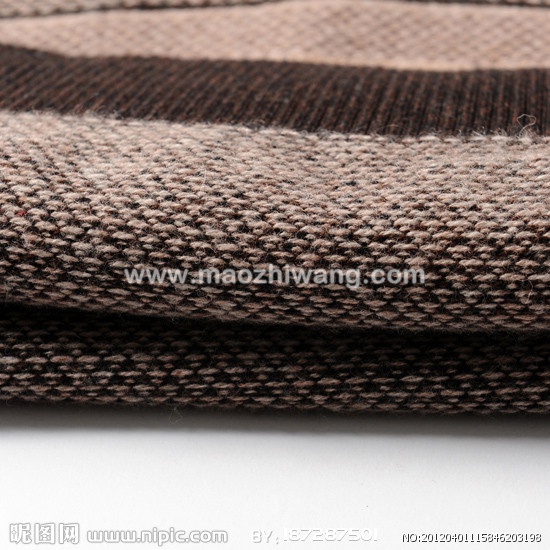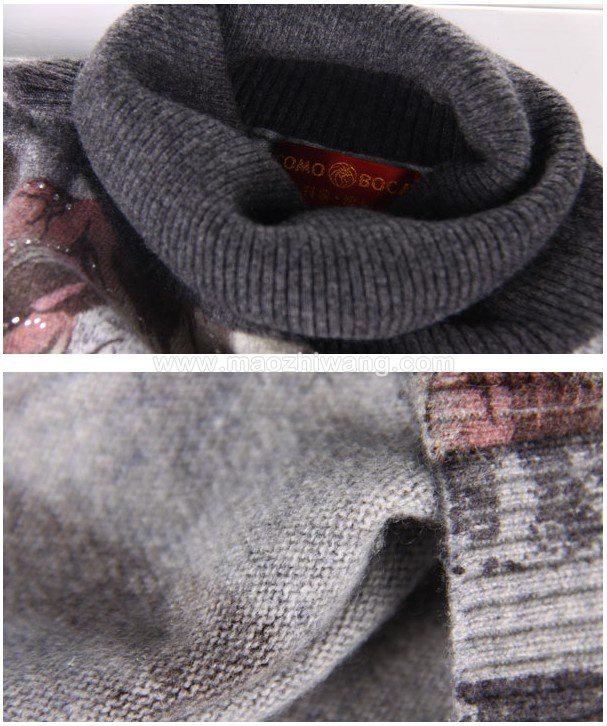Classification and performance of woolen sweater raw materials

A cardigan is a general term for knitwear woven from wool yarn or wool-like synthetic yarn. The woolen sweater is soft and elastic, and it is an ideal warm clothing. Because of its fast and colorful style and pattern, it is still an art ornament. With the improvement of people's consumption level and the pursuit of individuality and natural beauty, woolen sweaters are particularly favored. In recent years, with the increase in the supply of various varieties of raw materials for household knitting machines (horizontal machines) into ordinary households and markets, wool Shirts have become the most common knitwear for men, women and children.

(1) Classification of sweaters
According to the different materials used, sweaters are roughly as follows:
1 . Pure sweater
Pure sweaters are mainly woven from wool knitted or wool single-knit yarn.
2 . Cashmere sweater
Cashmere sweaters are made from pure cashmere. The texture is soft, lubricious and shiny, warmer than normal sweaters. Most of the varieties supplied by the domestic market are woven from cashmere blended with 5 % to 15 % nylon blended yarns, and the abrasion fastness can be doubled.
3 . Rabbit sweater
Due to the short length of rabbit hair, it is usually made of 30 % or 40 % rabbit hair and wool blended yarn.
4 . Camel sweater
Camel sweaters are generally made of 50 % camel and wool blended yarns. They are warmer and less pilling. Because they have natural pigments, they can only be dyed dark or use original color.
5 . Ma Hai sweater
Mohair is also known as Angora wool, which is suitable for the production of hair-drawn products because of its long and shiny fibers.
6 . Acrylic shirt (or acrylic bulk shirt)
The acrylic shirt is woven from acrylic expanded knit. The fabric has good warmth retention, bright color translation, good color shade than pure wool, high strength, good hand feeling, light resistance, weather resistance, and washing resistance.
7 . Blended sweater
Blended sweaters are mostly woven from wool/nitrile or wool/viscose yarns. They are characterized by soft handfeel, good warmth and low price.
The above raw materials are basically available in the market. Wool, cashmere, mohair, rabbit hair, and camel hair are all natural fibers. They are generally used to weave higher grades. Acrylic fiber is a chemical fiber. It and other blended yarns are generally used for weaving medium and low gear products.
(2) Characteristics of several main raw materials
1 . Sheep wool fiber
The shape of the wool fiber is a slender cylindrical object composed of a scale layer, a cortical layer and a medulla layer. Due to the directionality of the scales, the wool fibers have good fluffing properties under certain conditions of moist heat and soap, plus the action of mechanical external force. The diameter of the wool fiber is within 18 to 42 micrometers. The finer the fiber, the higher the number of spinnable fibers, the higher the relative strength, the greater the degree of curl and the better the elasticity.
According to the regulations of the International Wool Bureau, the wool yarn spun from pure wool fiber is shown in Figure 1 of the “Pure Wool Markâ€.
1 . Cashmere fiber
Cashmere fiber is obtained by combing the fluff from the goat under the long hair. The villus fibers are composed of a scale layer and a cortical layer without a medulla layer. It has an average fineness of 15 to 16 microns and is the smallest fineness of wool fibers. Cashmere has better strength and elastic deformation than sheep wool, so cashmere has excellent properties such as softness, smoothness and good warmth. It is a precious raw material. More valuable is that it has a natural color, among which white cashmere is the most expensive.
3 . Mohair
Mohair is native to goats in Angola. The wool fibers are coarse and belong to coarse fluff. The surface scales are few and blunt, the appearance of the fiber is bright and silvery, the elasticity is excellent, and it is obviously superior to wool, and has a noble style.
4 . Rabbit hair fiber
Rabbit hair is a wool fiber that has been cut from a rabbit. Rabbit hair fiber is white, shiny, soft, smooth, and has good warmth. Most of the fineness of the fibers is between 10 and 15 microns. The scales of rabbit hair are arranged very tightly, without curling, and the fiber is bulky. It is not suitable for pure spinning. It is generally blended with wool, nylon and acrylic.
5 . Camel hair fiber
The camel hair fiber is actually the fluff that the bactrian camel combs during the hair removal. The hair fibers are slender, have a natural color and are light brown. Very soft, with exceptionally good thermal insulation and high strength. It is not suitable for pure spinning materials, and most of them are blended with high-branched wool.
6 . Acrylic fiber (polyacrylonitrile fiber)
Acrylic fiber has unique characteristics similar to wool, with soft hand feeling, good bulkiness and good elasticity. The feel and appearance are very similar to wool, so it is called "artificial wool". Its dyeing performance is good, the color is bright, and the warmth is strong.
7 . Blended yarn
Generally, wool or acrylic fibers, viscose and other chemical fibers or rayon fibers are blended in a certain ratio. It combines the advantages of both and reduces costs.
Artistar , https://www.cn-artistar.com